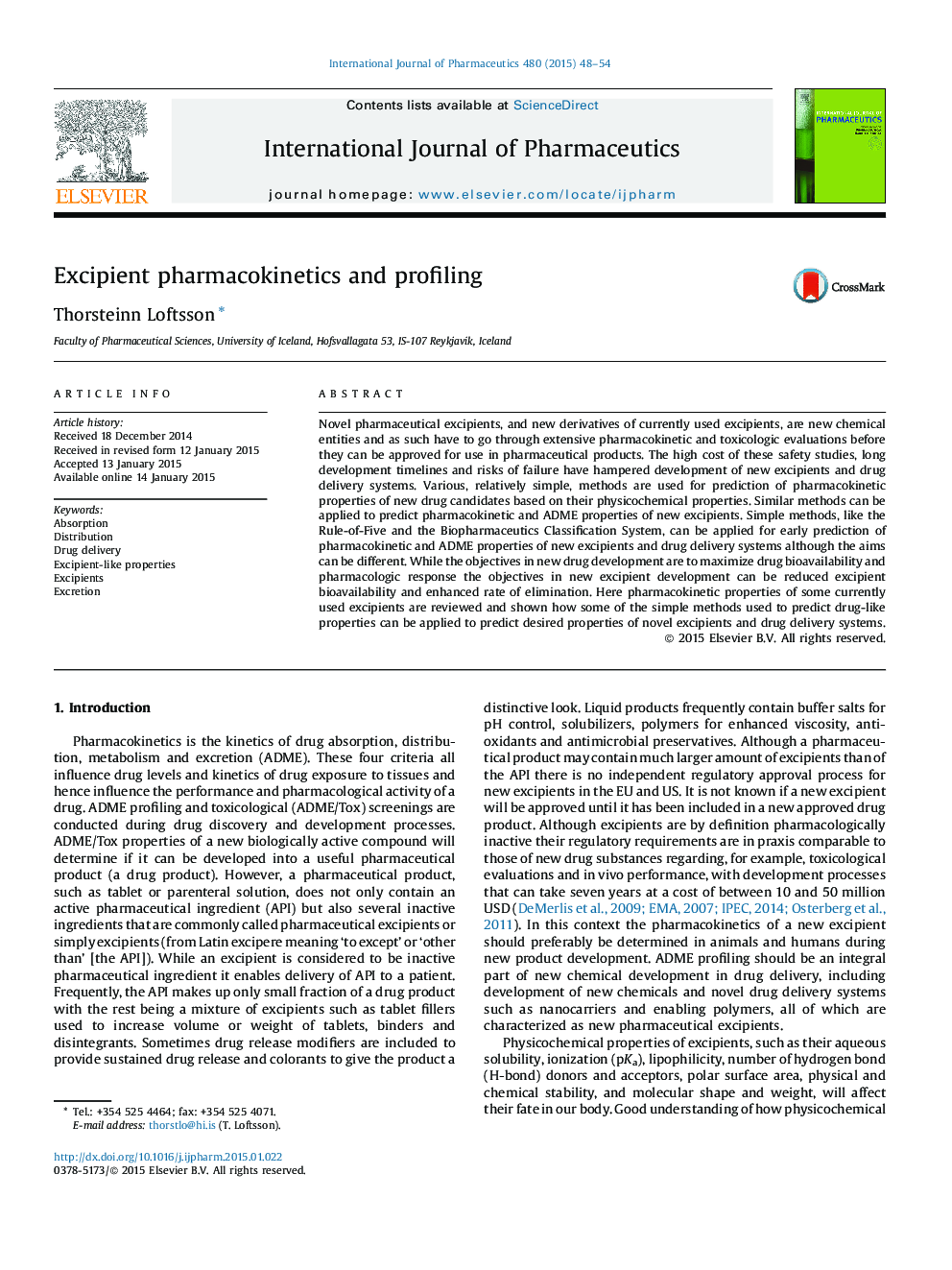| Article ID | Journal | Published Year | Pages | File Type |
|---|---|---|---|---|
| 5818990 | International Journal of Pharmaceutics | 2015 | 7 Pages |
Novel pharmaceutical excipients, and new derivatives of currently used excipients, are new chemical entities and as such have to go through extensive pharmacokinetic and toxicologic evaluations before they can be approved for use in pharmaceutical products. The high cost of these safety studies, long development timelines and risks of failure have hampered development of new excipients and drug delivery systems. Various, relatively simple, methods are used for prediction of pharmacokinetic properties of new drug candidates based on their physicochemical properties. Similar methods can be applied to predict pharmacokinetic and ADME properties of new excipients. Simple methods, like the Rule-of-Five and the Biopharmaceutics Classification System, can be applied for early prediction of pharmacokinetic and ADME properties of new excipients and drug delivery systems although the aims can be different. While the objectives in new drug development are to maximize drug bioavailability and pharmacologic response the objectives in new excipient development can be reduced excipient bioavailability and enhanced rate of elimination. Here pharmacokinetic properties of some currently used excipients are reviewed and shown how some of the simple methods used to predict drug-like properties can be applied to predict desired properties of novel excipients and drug delivery systems.
Graphical abstractDownload high-res image (176KB)Download full-size image
